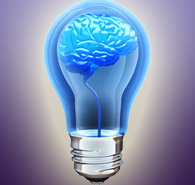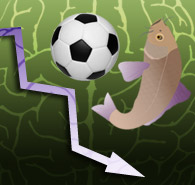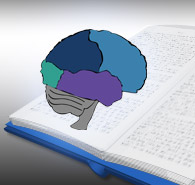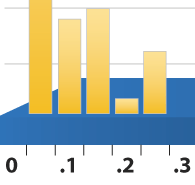by Siegfried Othmer | September 27th, 2010
 The following is a brief report on a recent case of recovery from addiction. This was one of the first addiction cases in which we utilized the extension of our software to cover the low frequency range down to 0.1 mHz (milliHertz). Essentially all of the training of this client took place within this range, i.e. with the exception of several Alpha-Theta sessions. The client has given permission for us to tell her story. She is of middle age now, and has been struggling with addiction to heroin and cocaine for the last fifteen years. When she had her first experience with heroin, she knew immediately that she would do anything to repeat it. The cocaine came later. Episodically, she experienced an overwhelming, compulsive drive to use “that blows everything else away.” She was unable to resist, and in these episodes nothing else mattered. With that lifestyle came going to the bad parts of town, and dealing with people one would rather avoid. “It pulls you into this dark place that makes you hate yourself. It is addiction at its worst.” The following is a brief report on a recent case of recovery from addiction. This was one of the first addiction cases in which we utilized the extension of our software to cover the low frequency range down to 0.1 mHz (milliHertz). Essentially all of the training of this client took place within this range, i.e. with the exception of several Alpha-Theta sessions. The client has given permission for us to tell her story. She is of middle age now, and has been struggling with addiction to heroin and cocaine for the last fifteen years. When she had her first experience with heroin, she knew immediately that she would do anything to repeat it. The cocaine came later. Episodically, she experienced an overwhelming, compulsive drive to use “that blows everything else away.” She was unable to resist, and in these episodes nothing else mattered. With that lifestyle came going to the bad parts of town, and dealing with people one would rather avoid. “It pulls you into this dark place that makes you hate yourself. It is addiction at its worst.”
Before beginning neurofeedback, she has participated in twenty-five rehabilitation treatments for her addiction over the last fifteen years, and has been through multiple incarcerations related to drug use. She was taking Suboxone, itself an opiate used to detox people from heroin. This helped to manage her heroin addiction and moderate her cravings.
Read More »
Posted in Clinical Results, Efficacy, Neurofeedback | No Comments »
by Siegfried Othmer | August 5th, 2010
 The Dysponesis Hypothesis The Dysponesis Hypothesis
We are always casting about for better ways to frame the work that we do in order to make it comprehensible to other professionals and lay persons. Sometime it helps to dip into past history to see how others wrestled with the same issue. One notion that has threaded its way through is that of simple inefficiency in brain regulatory function, which naturally leads to the suggestion that our training improves regulatory effectiveness through promoting higher efficiency in the regulatory mechanisms. It’s a simple concept with a certain amount of face validity, and also offers the virtue of vagueness where we are still uncertain about the details. Another slightly different theme is that the brain sometimes works against itself, that its efforts to right the ship are sometimes counter-productive.
The term dysponesis encompasses a variety of dysfunctions in which the CNS operates counter to the desired end-result. In considering the possible utility of this term in modern parlance, I am going back to an article written by George Whatmore and Daniel Kohli back in 1968 (Behavioral Science, 13(2), 102-124, (1968)), and reprinted as a book chapter in the text Mind/Body Integration (Erik Peper, Sonia Ancoli, and Michelle Quinn, editors), which was first published in 1979. The authors were two physicians in private practice.
Read More »
Posted in Application of Neurofeedback, Biofeedback, Clinical, Clinical Results, Clinical Symptoms, Disregulation, Neurofeedback, Research, Scientific | 4 Comments »
by Siegfried Othmer | June 17th, 2010
 We are challenged at all levels by complexity. In response, we do our best as scientists and engineers to model system behavior. No matter how far we are along in this process, however, we encounter events which make it clear that the model of behavior does not also model misbehavior. Misbehavior acts differently, and we don’t get to an understanding of that just by refining our existing models. Different models are needed. We are challenged at all levels by complexity. In response, we do our best as scientists and engineers to model system behavior. No matter how far we are along in this process, however, we encounter events which make it clear that the model of behavior does not also model misbehavior. Misbehavior acts differently, and we don’t get to an understanding of that just by refining our existing models. Different models are needed.
The Flash Crash
In the world of finance, we have become collectively bedazzled by “efficient market theory,” the idea that market prices immediately reflect the best knowledge that exists about a particular investment. In an ideally functioning market, sellers and buyers are always nearly matched, and volatility is increasingly squeezed out of the system. Volatility is the best measure of attendant risk, hence a robust market is the best assurance we may have that our investment risk is bounded and finite—i.e., quantifiable and of manageable scope.
Read More »
Posted in Neurofeedback | 2 Comments »
by Siegfried Othmer | June 17th, 2010
 In connection with the current performance of Wagner’s Ring of the Nibelung here in Los Angeles, a panel discussion was organized at the REDCAT theatre on mythology and the human brain with Antonio Damasio (neuroscientist), Peter Sellars (theater, opera, and movie director, and impresario), and Bill Viola (videographer). (REDCAT stands for Roy and Edna Disney/CAL Arts Theater.) In connection with the current performance of Wagner’s Ring of the Nibelung here in Los Angeles, a panel discussion was organized at the REDCAT theatre on mythology and the human brain with Antonio Damasio (neuroscientist), Peter Sellars (theater, opera, and movie director, and impresario), and Bill Viola (videographer). (REDCAT stands for Roy and Edna Disney/CAL Arts Theater.)
The Origins of Myth
Damasio started the afternoon off by delving into the presumptive beginnings of myth among our early ancestors. He drew a distinction between us and our near animal relatives, the chimpanzees, with respect to memory. We have a deeper and more complex autobiographical memory, which is foundational to the emergence of myth. He then also asserted that the emergence of imagery in our species preceded the emergence of language.
Read More »
Posted in Neurofeedback | 4 Comments »
by Siegfried Othmer | March 10th, 2010
 The first convincing evidence for EEG feedback efficacy in the management of pathophysiology was with regard to generalized seizures. The early work by Sterman, Lubar, as well as the subsequent follow-up by others, therefore remains a crucial point of reference for the various feedback techniques that have built upon the early protocol of SMR reinforcement combined the theta-band and high-beta band inhibition. Remarkably, the essential features of the early approach have been retained in the various evolutionary pathways that have emanated from the early work. This essential similarity has perhaps obscured other aspects of the training approach that have changed substantially over time, the significance of which may not have been fully appreciated except in reflection. In this newsletter we consider some of these changes and their implications generally, as well as for seizure management in particular. The first convincing evidence for EEG feedback efficacy in the management of pathophysiology was with regard to generalized seizures. The early work by Sterman, Lubar, as well as the subsequent follow-up by others, therefore remains a crucial point of reference for the various feedback techniques that have built upon the early protocol of SMR reinforcement combined the theta-band and high-beta band inhibition. Remarkably, the essential features of the early approach have been retained in the various evolutionary pathways that have emanated from the early work. This essential similarity has perhaps obscured other aspects of the training approach that have changed substantially over time, the significance of which may not have been fully appreciated except in reflection. In this newsletter we consider some of these changes and their implications generally, as well as for seizure management in particular.
The common thread in most modern neurofeedback approaches is the combination of a reinforcement strategy on one EEG frequency or another and an inhibit strategy based on detection of excursions into dysregulation. Some issues relating to the inhibit side have been relegated entirely to the software, thus removing them from ready visibility. Artifact detection and the division of labor between that and the conventional inhibits is a case in point. Specific targeting strategies typically remain to the discretion of the practitioner, as for example with respect to thresholding, placement, and frequency band selection. The general thrust over time has been to broaden the “field of view” of this EEG-based disregulation detector, mainly with respect to the frequencies being targeted, but sometimes also in terms of placement. Multi-channel instruments allow independent choice of placement for the reward and the inhibit strategies. Fortuitously, the various inhibit strategies being actively used—-though differing significantly from each other—-have not been wrapped up in much controversy.
Read More »
Posted in Application of Neurofeedback, Clinical Methods, Clinical Results, Efficacy, Neurofeedback | No Comments »
by Matthew Fleischman | January 19th, 2010
 by Matthew Fleischman, PhD by Matthew Fleischman, PhD
“We’re not in Kansas anymore!” I thought to myself after hearing Dr. Eugene Peniston speak about brainwave therapy for alcoholism at The Menninger Foundation in Topeka in 1988. It was truly an over-the-rainbow idea that we could treat profound emotional and behavioral problems just by training individuals to modify their brainwaves. And in the twenty plus years since, I have remained committed to bringing this amazing treatment from Oz to the real world.
online pharmacy
By any measure, positive client feedback, steady referrals and extensive records indicating client reported improvement suggest it has been a wonderful journey. I have learned some fantastic things and made the friendship of some outstanding colleagues. I’ve also had the pleasure of playing with some amazing toys: brain maps, symptom and QEEG-based protocols, LENS, HEG, SmartBrain Games, pirHEG and the Othmers’ ILF model.
Read More »
Posted in Neurofeedback | 2 Comments »
|
|
Subscribe to Email Newsletter
The EEG Info Newsletter circulates via email at least once a month. A variety of topics related to the Neurofeedback / EEG Biofeedback field are covered in over 300 articles.
|
 The following is a brief report on a recent case of recovery from addiction. This was one of the first addiction cases in which we utilized the extension of our software to cover the low frequency range down to 0.1 mHz (milliHertz). Essentially all of the training of this client took place within this range, i.e. with the exception of several Alpha-Theta sessions. The client has given permission for us to tell her story. She is of middle age now, and has been struggling with addiction to heroin and cocaine for the last fifteen years. When she had her first experience with heroin, she knew immediately that she would do anything to repeat it. The cocaine came later. Episodically, she experienced an overwhelming, compulsive drive to use “that blows everything else away.” She was unable to resist, and in these episodes nothing else mattered. With that lifestyle came going to the bad parts of town, and dealing with people one would rather avoid. “It pulls you into this dark place that makes you hate yourself. It is addiction at its worst.”
The following is a brief report on a recent case of recovery from addiction. This was one of the first addiction cases in which we utilized the extension of our software to cover the low frequency range down to 0.1 mHz (milliHertz). Essentially all of the training of this client took place within this range, i.e. with the exception of several Alpha-Theta sessions. The client has given permission for us to tell her story. She is of middle age now, and has been struggling with addiction to heroin and cocaine for the last fifteen years. When she had her first experience with heroin, she knew immediately that she would do anything to repeat it. The cocaine came later. Episodically, she experienced an overwhelming, compulsive drive to use “that blows everything else away.” She was unable to resist, and in these episodes nothing else mattered. With that lifestyle came going to the bad parts of town, and dealing with people one would rather avoid. “It pulls you into this dark place that makes you hate yourself. It is addiction at its worst.”






 We are challenged at all levels by complexity. In response, we do our best as scientists and engineers to model system behavior. No matter how far we are along in this process, however, we encounter events which make it clear that the model of behavior does not also model misbehavior. Misbehavior acts differently, and we don’t get to an understanding of that just by refining our existing models. Different models are needed.
We are challenged at all levels by complexity. In response, we do our best as scientists and engineers to model system behavior. No matter how far we are along in this process, however, we encounter events which make it clear that the model of behavior does not also model misbehavior. Misbehavior acts differently, and we don’t get to an understanding of that just by refining our existing models. Different models are needed. In connection with the current performance of Wagner’s Ring of the Nibelung here in Los Angeles, a panel discussion was organized at the REDCAT theatre on mythology and the human brain with Antonio Damasio (neuroscientist), Peter Sellars (theater, opera, and movie director, and impresario), and Bill Viola (videographer). (REDCAT stands for Roy and Edna Disney/CAL Arts Theater.)
In connection with the current performance of Wagner’s Ring of the Nibelung here in Los Angeles, a panel discussion was organized at the REDCAT theatre on mythology and the human brain with Antonio Damasio (neuroscientist), Peter Sellars (theater, opera, and movie director, and impresario), and Bill Viola (videographer). (REDCAT stands for Roy and Edna Disney/CAL Arts Theater.) The first convincing evidence for EEG feedback efficacy in the management of pathophysiology was with regard to generalized seizures. The early work by Sterman, Lubar, as well as the subsequent follow-up by others, therefore remains a crucial point of reference for the various feedback techniques that have built upon the early protocol of SMR reinforcement combined the theta-band and high-beta band inhibition. Remarkably, the essential features of the early approach have been retained in the various evolutionary pathways that have emanated from the early work. This essential similarity has perhaps obscured other aspects of the training approach that have changed substantially over time, the significance of which may not have been fully appreciated except in reflection. In this newsletter we consider some of these changes and their implications generally, as well as for seizure management in particular.
The first convincing evidence for EEG feedback efficacy in the management of pathophysiology was with regard to generalized seizures. The early work by Sterman, Lubar, as well as the subsequent follow-up by others, therefore remains a crucial point of reference for the various feedback techniques that have built upon the early protocol of SMR reinforcement combined the theta-band and high-beta band inhibition. Remarkably, the essential features of the early approach have been retained in the various evolutionary pathways that have emanated from the early work. This essential similarity has perhaps obscured other aspects of the training approach that have changed substantially over time, the significance of which may not have been fully appreciated except in reflection. In this newsletter we consider some of these changes and their implications generally, as well as for seizure management in particular.